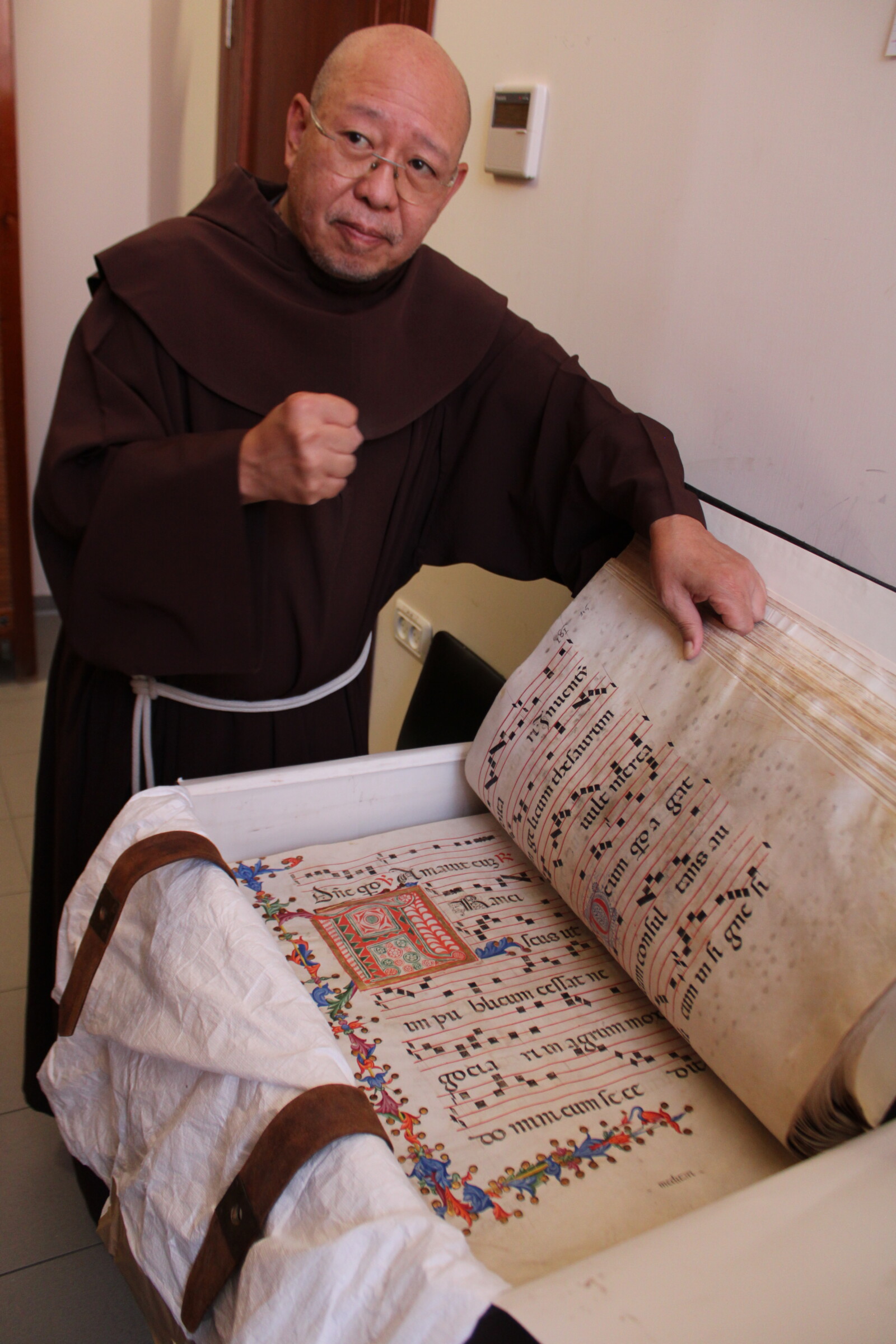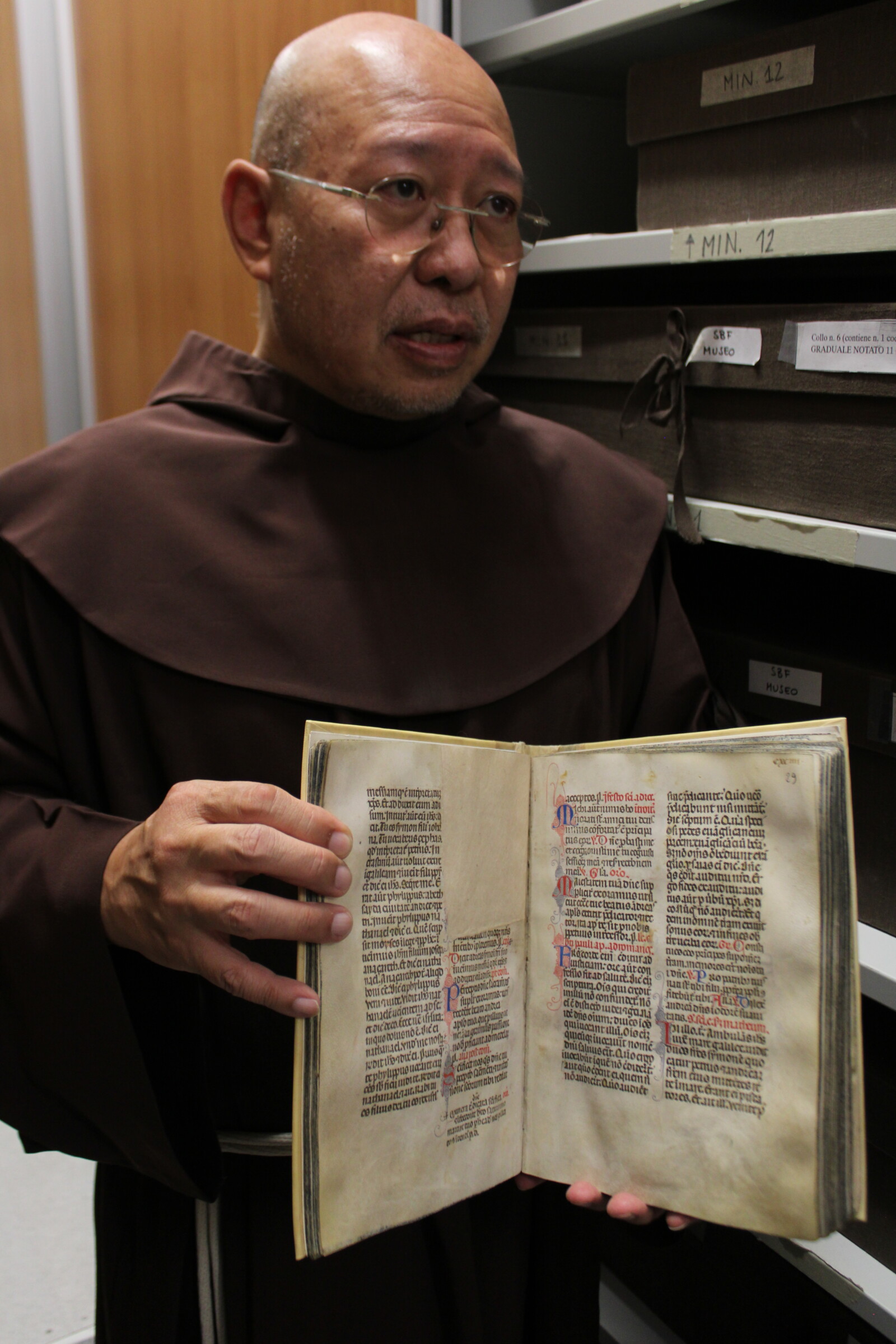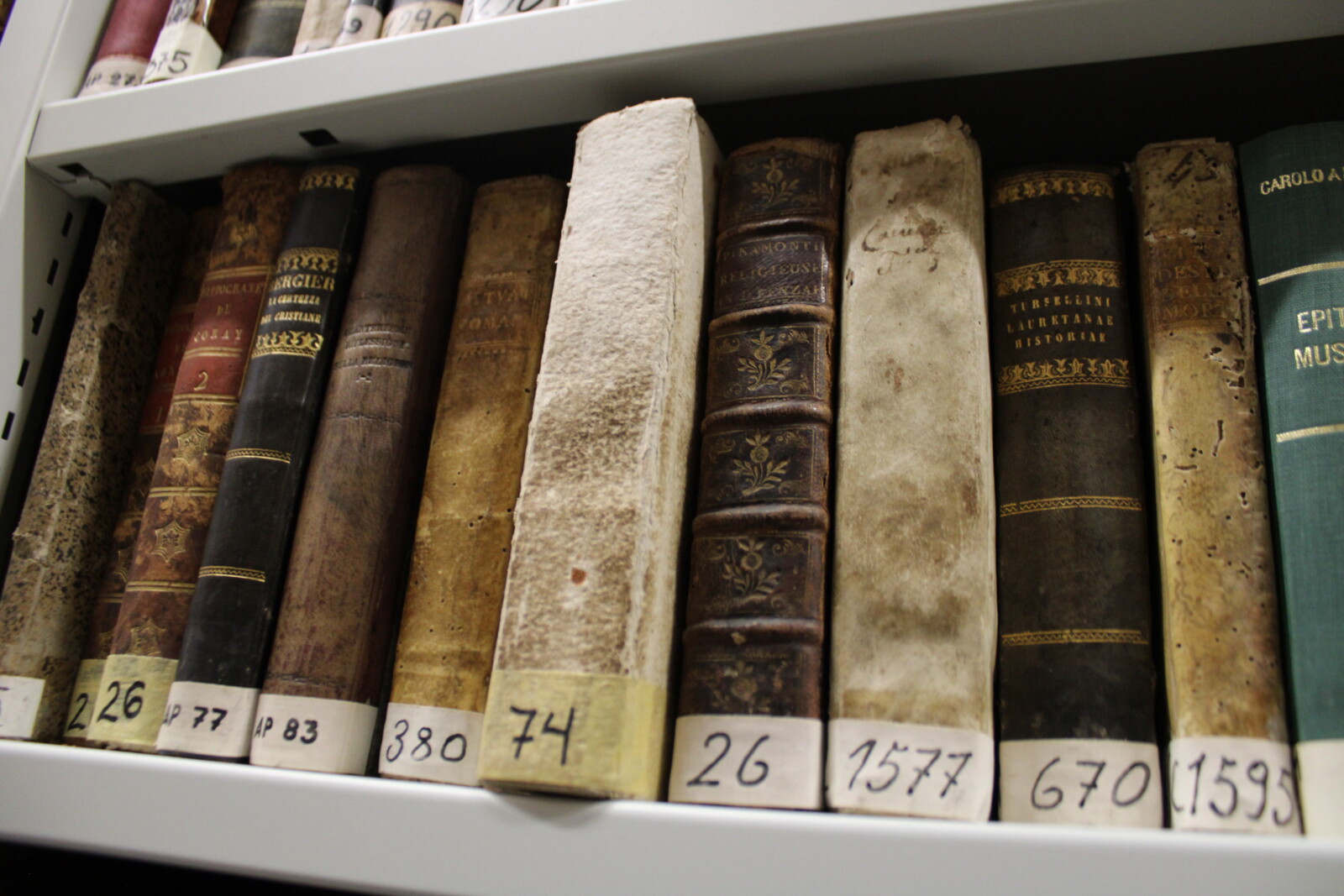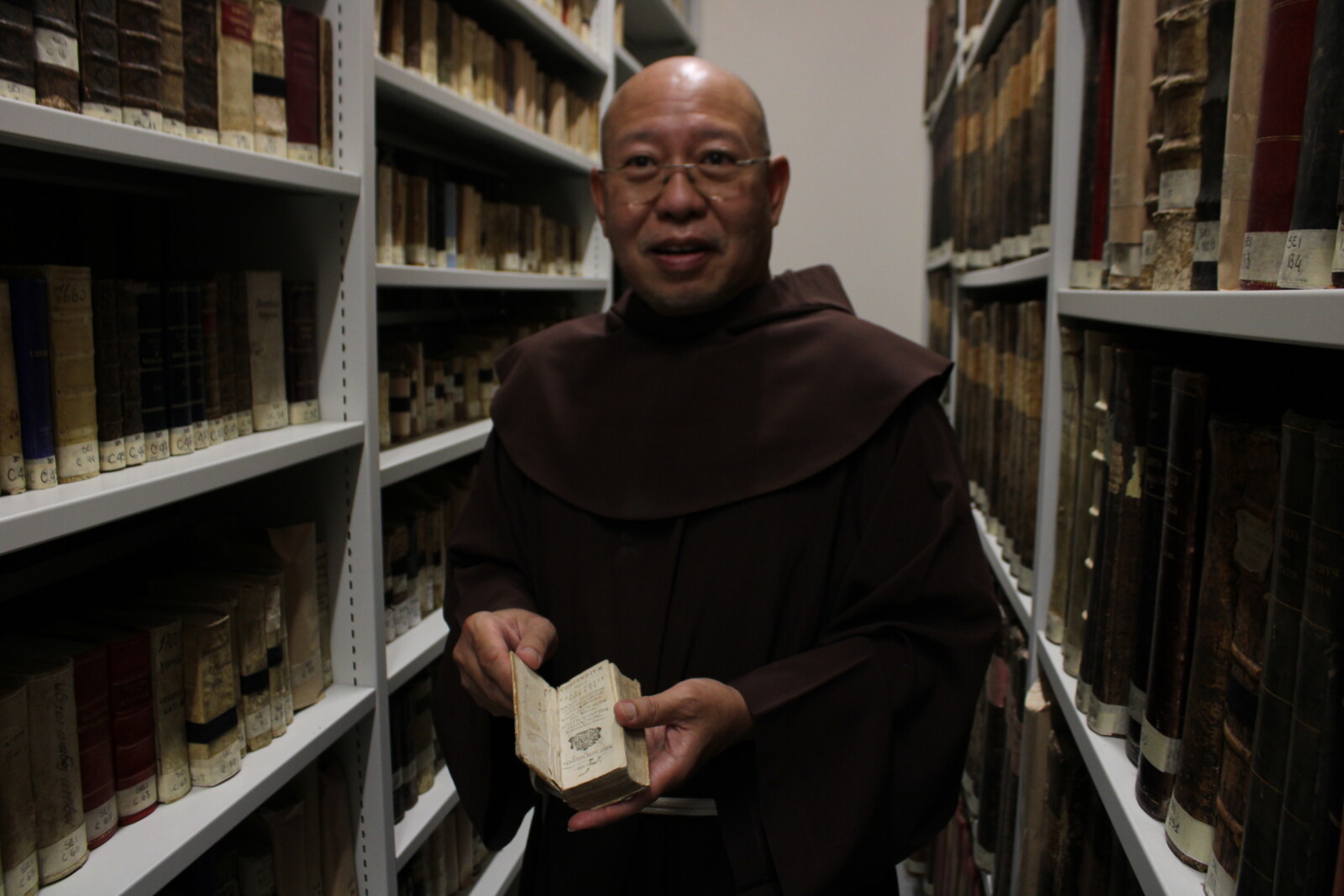“Slow, but full of life” : the Library of the Custody told to us by Fr. Lionel
The library of the Custody holds tens of thousands of volumes, It is the oldest library in the Holy Land and it is a museum in itself. We introduce it to you today through the story of its director, Friar Lionel, who has watched over this heritage for many years with passion and devotion.
Tell us about your work as librarian of the Custody.
My work is mainly a role of coordinator. We are at the centre, as it is here that all the books from the libraries of the convent in the Holy Land are grouped together. They are given to us and we receive them. And it is not an easy task : we are speaking about 51,000 modern volumes, plus 3,000 ancient ones. All the ancient ones of the territory of the Custody are sent here, to be preserved and repaired, if necessary. They have to be catalogued and prepared for lending outside, to other libraries or for exhibition.

What kind of collections does the library house?
The modern collection mainly contains books on theology, available for the seminary. We also have a medieval collection, mostly from the Crusades. The other part is the ancient collection Here there is a very important section consecrated to itineraries in the Holy Land. These are guidebooks or diaries written by friars and pilgrims who came to the Holy Land from the whole of Europe. Many academics come here to consult these unique volumes.
The other important collection is that of the Franciscan printing press. All the books printed by the Franciscan press since 1846 are kept here. Two of our students have already oriented their Ph.D. research on the history of the printing press.

Pilgrims’ diaries and the Franciscan printing press: these are the two largest collections.
That’s not all! Another very important collection is that of the Custody’s pharmacy. It is perhaps the oldest collection on medicine and pharmacy in the Holy Land. Since the 15th century, the friars have carried manuals on medicine to treat the local population. For example, there is an explanation on how to make a bandage in a practical way, how to open an infected limb… There are reference books here that have been used for very practical purposes.
But the first books that the friars brought with them from Europe were liturgical books: the missel and the breviary, to celebrate mass.

There is another particularity of the library at St Saviour: the diversification of the origin of the books.
It is true that most of them are in Spanish, because the King of Spain was the protector of the Catholic Church here. The King offered the friars many books between the 16th and the 17th centuries. Ain Karem, for example, has a magnificent library as it was a royal convent: the convent thus had many precious volumes.
As well as books, the King of Spain also made gifts of other objects useful for the liturgy. Many of them will be on display in the Terra Sancta Museum, creating a strong bond between the museum and the library.
Amongst the library’s collections, is there one that you like best?
I like the medieval manuscripts very much. They are decorated with magnificent miniatures. The volumes that King Henry IV of England gave us have very beautiful patterns painted in gold. They were given to the friars of the Holy Sepulchre so that they would pray each day for his father. This is exactly what it says on the colophon (a short text in the margin of a printed work, containing information about the publication). They are very rare examples, which have been exhibited all over the world.



What is the part of your work that is the most fascinating?
I love the idea of being able to play a part in teaching the students, who come here to consult the modern collection; I help them, I give them advice. Often, they don’t have the time to read a whole book, so they come to me to explain it to them. On my small scale, I contribute to their formation.
Tell us about your formation. What course of study led you to the library of the Custody?
I studied library science at the University of South Africa in 1990, but I could not take the final examination because I was sent to Jerusalem in 1992. Before that I had been the librarian at the Studium Biblicum in Hong Kong for six years.
Today you are also the director of all the Holy Land libraries. What condition are they in?
There are some critical situations, as in Aleppo, where there is the oldest library of the Custody. There we have to check the state of the books, but we have no news of the library. The humanitarian situation is such that the friars there do not have the time to deal with it. It would be important to send someone to do this specific job.
Before the war, the friars were able to go to Syria, from where they brought back ancient books of great value which are today kept here in Jerusalem, Today this is impossible.

The situation is also worrying in Muski, in Egypt. The library is in the Nile delta. The humidity there is very high and the books on the ground floor are affected by it. We should take them away from there but, as they are considered part of the national heritage, we do not have the right to do so.
Each library has a character of its own…
And what is the character of the library of the Custody?
It is like an old and scholarly man; he is highly cultivated and has a rhythm of his own: slow, but full of life.




